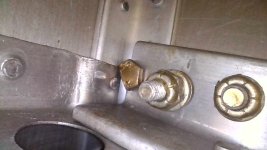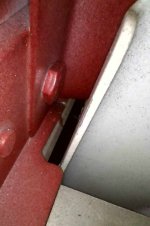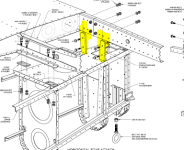I have read over several RV-8 builder sites and almost everyone has the same issue The elevator does not hit the down stop at the max down travel limit, and you are doing this after the stop has been fabricated according to the plans and installed. To get within the up limit minimum you have to trim the aft deck to the point that the elevator horn is close if not touching the aft bulkhead. To get max up travel the elevator horn must be trimmed.
So this begs the question, with as long as these kits have been around why doesn't Van's at least put out notes so that when you are building the down stop you can make it a bit longer and then trim as required. These kits are pre-punched. I have a QB but my kit mistakenly came with the pre-punched angles for these stops, you can't make them longer.
So does Van's really want you to have the 1.5 degree (that is what it does for my plane) of extra down travel but don't want to publish this? There are not a lot of issues like this but there have been a few, if so many builders find these things Van's must be getting calls, so why not issue some builder notes with the kits.
The other nugget I have now read about on other sites is trimming the VS forward spar, if you trim to the plans dimension you will end up with less than optimal edge distance on the bottom rivets. When I called about this to Van's the first guy said, you can see from the DWG that it is planned for minimum ED. I did not say anything then but, I thought why plan for minimum ED on a part that you control how much gets trimmed off! Oh well I guess it all make us better builders.
Cheers









